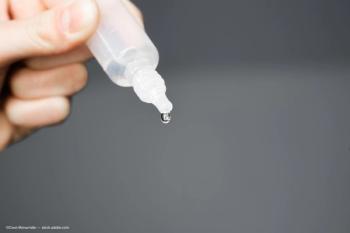
Ocular perfusion pressure, cerebrospinal fluid pressure: New players in glaucoma
By Lynda Charters, Reviewed by Jeffrey Liebmann, MD
The health of the retinal ganglion cells is affected by numerous factors, with intraocular pressure (IOP) being one of the most important and modifiable of the risk factors. Two additional risk factors–ocular perfusion pressure (OPP) and cerebrospinal fluid pressure (CSF)–may be instrumental in risk assessment and managing glaucoma patients.
In discussing the involvement of OPP, Jeffrey Liebmann, MD, offered the question: “Is OPP perhaps a second modifiable risk factor in glaucoma in which only IOP is treated, and what can we do about it, if anything?”
Dr. Liebmann is the Shirlee and Bernard Brown Professor and Director, Glaucoma Division, Harkness Eye Institute, Columbia University Medical Center, New York.
Numerous studies confirm
Numerous large studies of glaucoma have looked at thousands of patients worldwide, notably the Baltimore Eye Survey, the Barbados Eye Survey, and the Los Angeles Latino Eye Survey, all population-based studies. The results of these studies pointed to the impact of low OPP in the development of glaucoma.
The Baltimore Eye Survey and the Los Angeles Latino Eye Survey found that lower diastolic perfusion pressure was associated significantly with a higher risk of glaucoma.
At the other end of the spectrum very high blood pressure (BP) might increase the risk of glaucoma.
This effect of low pressure also was seen in a study of a European population, i.e., the lower the diastolic BP, the greater the prevalence of glaucoma was, according to Dr. Liebmann.
The Barbados Eye Survey showed that in patients of African ancestry over 40 years of age, 2.2% of patients had an incidence of open-angle glaucoma after 4 years. Dr. Liebmann explained that this is “extraordinarily high” and found that the lower the OPP, the greater the risk for glaucoma.
“Lower perfusion pressure was a tremendous risk factor in the African-descent population in Barbados and increases the risk of disease onset,” he added.
Good and bad of lowering BP
Prescribing systemic BP-lowering medications is commonplace in medical practice because the drugs extend patients’ lives and the trend to lower the BP to a systolic level of 120 continues.
“However, if the BP is lowered artificially, the risk of glaucoma might increase in some patients as seen in the Thessanoliki Eye Survey,” Dr. Liebmann noted. “In the Low-Pressure Glaucoma Treatment Study in which timolol and brimonidine were used, administration of antihypertension medications was also an independent risk factor for progression of glaucoma.”
These findings are important for elderly patients with glaucoma who in many cases are taking increasingly more antihypertensive drugs, Dr. Liebmann emphasized.
Nocturnal perfusion pressure
Dr. Liebmann and colleagues performed a pilot study in which they looked at nocturnal hypotension by monitoring the BP in patients 3 times over a 12-month period for 48 hours at a time. The investigators evaluated the patients’ series of visual fields to identify signs of progression of damage and found that patients with nocturnal hypotension with an arterial BP that was 20 mm Hg below their mean arterial daytime BP were at greater risk of disease progression. When the arterial BP was 10 mm Hg below the mean arterial daytime BP, there was a substantial risk of progression, he reported.
After this pilot study was completed, doctors who specialized in hypertension performed a meta-analysis and reached the same conclusion–glaucoma specialists need to evaluate nocturnal hypotension when patients are receiving BP-lowering drugs and perform a prospective randomized study.
CSF pressure
Lower CSF pressure is another potential risk factor that should be considered regarding its effect on the eye. It was reported as a risk factor for normal tension glaucoma in a Chinese study.
“In the eye, the IOP pushes against the laminar cribrosa and causes distortion,” Dr. Liebmann explained. “In the presence of low CSF pressure, there is counterbalancing force and the deformation is worsened, even at the same level of IOP. These factors could be potential targets of study in the future.”
Lower BP and OPP are associated with a higher glaucoma prevalence, Dr. Liebmann said. Overtreatment of systemic BP should be avoided. Nocturnal hypotension can be deleterious to glaucoma. OPP should be a consideration during the evaluation of glaucoma patients.
“Careful patient histories regarding the presence and treatment of hypotension are needed and it should be determined if patients take pressure-lowering medications at night and if the hypertensive treatment is appropriate,” Dr. Liebmann pointed out. “The use of certain glaucoma medications, such as topical beta-blockers, should be minimized at night for less impact on the cardiovascular system.”
Jeffrey M. Liebmann, MD
This article was adapted from a presentation that Dr. Liebmann delivered at the Precision Ophthalmology 2016 meeting. He has no financial interest in any aspect of this report.
Newsletter
Don’t miss out—get Ophthalmology Times updates on the latest clinical advancements and expert interviews, straight to your inbox.













































